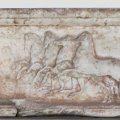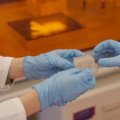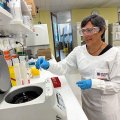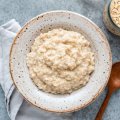UHT milk best practical way to store knocked-out teeth
Long-life milk may join bandages, painkillers and antiseptic as first aid kit necessities now that a University of Queensland study has shown it is the best practical medium for keeping cells alive on knocked-out teeth.
In a three-year study, School of Dentistry Associate Professor Laurence Walsh and former masters student Tim Smith conducted comprehensive laboratory trials on a range of tooth preservation solutions.
These included over-the-counter emergency tooth preservation products (largely composed of saline and glucose), standard and enhanced laboratory growth mediums, solutions used to store organs for transplants and Ultra High Temperature-treated (UHT) milk.
The researchers tested the effectiveness of the various media for preserving teeth after four periods of time - six, 24, 48 and 72 hours - and at storage temperatures of four degrees Celsius (refrigerator), 22 degrees (room temperature) and 37 degrees (body temperature).
They found that while laboratory growth media were the best overall for keeping cells from the root surface alive, UHT milk was the best practical choice for short-term emergency preservation because it was cheap, simple to use and readily available.
"Importantly, UHT milk performed better than the commercial, pharmacy-sold products," Dr Walsh said.
He said UHT milk was better than regular milk because it could be stored at room temperature for long periods.
"In this way, it can be kept in first aid kits at sporting grounds or schools," Dr Walsh said.
"Milk is a good medium for storing knocked-out teeth because cells from the root surface don't swell up and burst as they do when placed in water. It contains proteins which keep a constant acid to alkaline ratio, anti-bacterial substances as well as sugars to keep cells growing."
Teenage boys were at high risk of having teeth knocked out due to sporting field accidents, skylarking and fights, Dr Walsh said.
"The most important action to take after teeth are knocked out is to keep them in a suitable medium until you can get the person to a dentist to have the tooth replanted, ideally within 15 minutes," Dr Walsh said.
"If an appropriate storage medium is not available or there is an excessive delay between the accident and treatment, cells on the outside of the tooth's root start to die. If significant numbers die, the body is likely to reject the tooth when it is replanted. Nerves and connective tissues inside the tooth also begin to die once their blood supply is removed.
"If a tooth cannot be successfully replanted, dentures, bridges or implants can be used to replace the lost tooth but these options can run into thousands of dollars."
The study was undertaken as part of a collaborative research effort between a number of University departments and schools and the Queensland Motor Accident Insurance Commission (MAIC) and Centre for National Research on Disability and Rehabilitation Medicine (CONROD).
Established early last year, CONROD is a joint initiative of the University, MAIC and the Queensland Institute of Medical Research.
As part of the ongoing collaboration, the Dentistry School has established an Oro-Facial Trauma Research Group which is examining the factors leading to dental injuries in the community as well as mechanisms for regeneration and preservation of damaged tissues.
For more information, contact Dr Walsh (telephone 07 3365 8106, mobile 0407 875 989, email l.walsh@mailbox.uq.edu.au).
.jpg)








